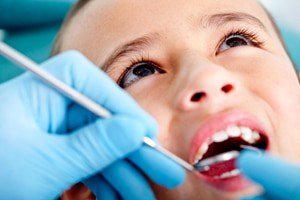3 breakthroughs in dental technology
 Machines may not be able to smile, but they’re definitely improving how we do. As technology continues to progress at blazing speeds, the oral health community is receiving some of the fruits of their advancements. The most groundbreaking works have featured 3-D printing, cavity-fighting lasers and stem cell therapy to kick dental problems to the curb. Students graduating from dental assistant classes can keep an eye of these astounding breakthroughs in the oral health world:
Machines may not be able to smile, but they’re definitely improving how we do. As technology continues to progress at blazing speeds, the oral health community is receiving some of the fruits of their advancements. The most groundbreaking works have featured 3-D printing, cavity-fighting lasers and stem cell therapy to kick dental problems to the curb. Students graduating from dental assistant classes can keep an eye of these astounding breakthroughs in the oral health world:
1. 3-D printing gives patient new smile
In one of the first applications of its kind, 3-D printers designed a new set of acrylic teeth for a patient who had lost a section of his palate after a cancer surgery.1 The patient, a 41-year-old man from Bangalore, India, had undergone infrastructure maxillectomy surgery, removal of the upper jaw and palate. As a result, his nose and maxillary sinus to the oral cavity were left exposed. He had trouble speaking and eating, and because he couldn’t open his mouth widely, it was nearly impossible to take an impression to create a prosthetic.
However, Osteo3d, a Bangalore-based company that specializes in 3-D printing for health care, created a three-dimensional reconstruction of the patient’s face. After the wax model was tested, the designers gave the patient an acrylic impression with teeth.
“Incredibly, the device was as close to a perfect fit as they could have gotten, even with traditional techniques, improving the patient’s speech, swallowing, eating, smiling, and bone structure,” Deepak Raj, co-founder of df3d, a design factory for 3-D printing and Osteo3d, told DrBicuspid.com. “The patient is in good health and is able to lead his day-to-day life with no hassles now, thanks to 3-D printing.”
2. Lasers defeat cavities
A 2014 study published in the Science Translational Medicine journal highlighted that the use of a low-powered laser, similar to the brightness of the sun, can regrow dentin and reverse tooth decay.2 Although the Harvard-led procedure has only been performed on rodents so far, scientists are hopeful that it could receive approval to test on humans within a year.
The light from the laser activated a cascade of chemicals in the mouth to coax stem cells into reforming dentin. Here’s how the process worked: At first, the laser induced reactive oxygen species (ROS), which are chemically active molecules containing oxygen that play a key role in cellular function. Then, the ROS triggered the latent regulatory cell protein called transforming growth factor beta-1, in turn spurring dental stem cells that grow dentin. After 12 weeks, X-ray imaging verified that laser treatments triggered the enhanced the dentin formation.
“Our treatment modality does not introduce anything new to the body, and lasers are routinely used in medicine and dentistry, so the barriers to clinical translation are low,” David J. Mooney, study leader and Robert P. Pinkas Family Professor of Bioengineering at the Harvard School of Engineering and Applied Sciences, said in a press release. “It would be a substantial advance in the field if we can regenerate teeth rather than replace them.”
In the future, certified dental assistants may be surprised to learn that treating a cavity might not involve a filling, root canal or crown. Instead, a laser might do the trick.
3. Stem cell regenerate jawbone
Roughly half of traumatic injuries involving the face result in the loss of teeth, surrounding tissue and bone that once supported the teeth, according to the University of Michigan School of Dentistry.3 However, because of inadequate jawbone support, there are often many craniofacial difficulties associated with these injuries. But U of M researchers discovered a new way to regenerate a patient’s jawbone through the use of stem cells.
The findings, published in Stem Cells Translational Medicine, showed that the stem cell therapy uses the patient’s own cells to regrow tissues instead of introducing man-made materials. In one patient missing seven of her front teeth plus 75 percent of the bone that once supported them, the cell therapy regenerated 80 percent of her missing jawbone, allowing surgeons to place oral implants that supported a dental prosthesis. In other words, she had a complete set of teeth again.4
The procedure is completed under local anesthesia and accelerates the healing time relative to that of traditional bone grafting while curbing the patient’s pain.
“As the first report to describe a cell therapy for craniofacial trauma reconstruction, this research serves as the foundation for expanded studies using this approach,” said Anthony Atala, MD, editor in chief of Stem Cells Translational Medicine and director of the Wake Forest Institute for Regenerative Medicine.
1Domino, D. (2014, October 27). Cancer patient who had jaw removed gets new teeth via 3D printing. Retrieved November 13, 2014, from www.drbicuspid.com/index.aspx?sec=sup&sub=img&pag=dis&ItemID=316655
2Kusek, K. (2014, May 28). Researchers use light to coax stem cells to repair teeth. Retrieved November 13, 2014, from www.seas.harvard.edu/news/2014/05/researchers-use-light-to-coax-stem-cells-to-repair-teeth
3Stem cells help doctors restore woman’s smile, regenerating bone to hold dental implants. (2014, November 5). Retrieved November 13, 2014, from www.prweb.com/releases/2014/11/prweb12303402.htm
4Domino, D. (2014, November 10). Study: Stem cells can regenerate jawbone to hold dental implants. Retrieved November 13, 2014, from www.drbicuspid.com/index.aspx?sec=nws&sub=rad&pag=dis&ItemID=316750